Secret sauce: the key to serial innovation and profit growth
Why do some companies fizzle out and fade away while others build on a strong start? Dr Mike Tubbs looks at the key factors behind sustainable success and highlights his favourite consistent performers.

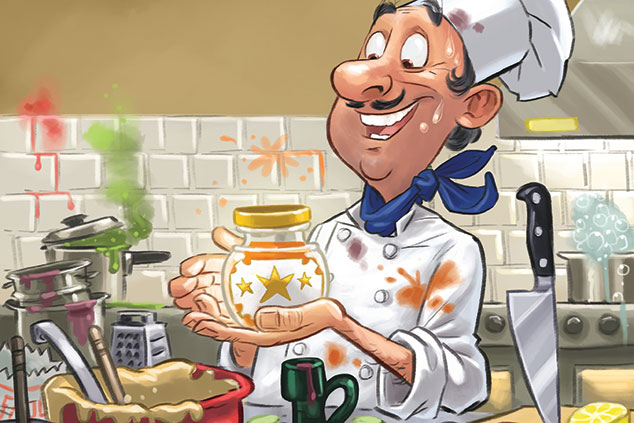
What makes a company successful? Consistent profitability. And what is the key to sustainable profitability? Innovation. The ability to adapt to change and keep producing products and services people want to buy is a hallmark of successful stocks. We will look at several serial innovators to gauge what they are doing right, what they have in common and which are worth buying now. Investors can also learn from companies that once dominated their fields, but then lost their innovative edge and fell by the wayside.
Failure has many fathers
Kodak is an interesting example of a firm that lost its edge. It once dominated the market for photographic film, materials and equipment. But Kodak failed to respond adequately to two different technological changes. The first was instant photography, where Kodak was worried by Polaroid's success and planned to introduce its own instant cameras and films in 1976 using a different approach to Polaroid. However, following Polaroid's successful launch of the SX-70 in 1972, Kodak decided to emulate Polaroid rather than come up with its own take on instant photography. This infringed Polaroid's patents and Kodak had to withdraw completely from this market in 1986 and was ordered to pay Polaroid damages of $925m in 1990.
Kodak's second failure was its decision not to exploit the invention of its own engineer, Steve Sasson, who invented and patented the digital camera in the 1970s. Kodak's management realised that this invention would cannibalise its profitable film photography business and decided to hide rather than develop the invention. They justified this by focusing on the disadvantages of the large size and low resolution of their early digital cameras. Instead, they should have considered trying to reduce size and boost performance, the main ways electronic devices get better and cheaper.
MoneyWeek
Subscribe to MoneyWeek today and get your first six magazine issues absolutely FREE

Sign up to Money Morning
Don't miss the latest investment and personal finances news, market analysis, plus money-saving tips with our free twice-daily newsletter
Don't miss the latest investment and personal finances news, market analysis, plus money-saving tips with our free twice-daily newsletter
Three irreparably tarnished brands
Nokia, Xerox and MySpace are three further examples of companies whose innovative drive flagged as they became larger. Nokia was originally a paper, rubber and cables company that saw opportunities in other fields, so it moved into electronics and computers around 1970. It created the world's first cellular network, and also launched a carphone in 1982 and the first portable mobile phone in 1987.
Jormo Ollila became CEO in 1992 and turned Nokia into a mobile-phone business, transforming it from a loss in 1991 to operating profits close to $4bn in 1999. By 2007 Nokia had a 49.4% share of the smartphone market, but Apple introduced the iPhone later that year, followed by Samsung and others using Alphabet's Android. Nokia's market share had dropped to 3% by 2013 when it sold the business to Microsoft. Nokia had excellent hardware, but lagged its competitors in software.
Xerox was a top innovative American company of the 1960s. Its research centre invented what was effectively the Macintosh PC, but top management did not enter the PC market: they had been traumatised by losing over $1bn trying to enter the mini-computer market via an acquisition. Then there is MySpace, once the dominant social networking site. In 2005 Mark Zuckerberg offered to sell Facebook then a small company to MySpace for $75m. MySpace's CEO, Chris De Wolfe, declined to buy and the rest is history. This is the corporate equivalent of failing to sign the Beatles. A similar mis-step was Electrolux's decision to reject James Dyson's revolutionary bagless cyclone vacuum cleaner because it would cut Electrolux's revenue from selling bags.
Kodak and Xerox are examples of companies whose research and development (R&D) departments made important innovative advances that management failed to exploit. Nokia failed to respond adequately to the opportunities clever software offered for smartphones; MySpace and Electrolux rejected golden acquisition opportunities. These are three different ways in which companies can lose their innovative drive. The common thread is a "head in the sand" response to change and new potential commercial opportunities.
The secret of serial innovation
So much for failures; what marks out successful serial innovators? We will now look at 11 companies that fit this description. They are online retail giant Amazon; Alphabet, Google's parent company; software group Adobe; ASML, a technology hardware company; Bristol-Myers Squibb, Incyte and Regeneron, three biotechnology firms; Spain's clothing retailer Inditex, whose brands include Zara; health group Intuitive Surgical, and Halma and Spirax-Sarco, specialist engineers.
The key feature appears to be a wide "moat": an enduring competitive advantage that protects its global market position against competitors. A combination of R&D and patents (to protect the results of R&D) is a classic way of achieving and maintaining a wide moat. This combination bodes well for long-term outperformance.
Ten of the 11 companies use R&D and patents to protect their moats. The three biotech firms have particularly high R&D with their key drugs protected by strong patents. Inditex's slightly narrower moat (it doesn't have to do R&D and in retail competitive advantages are more tenuous) rests on its strong brands, agile response to market needs and vertical integration. The third factor means it has complete control of the supply chain from manufacturing to distribution and retail: it doesn't farm anything out to other companies. All 11 companies have used acquisitions to supplement internal innovation. Spirax-Sarco, ASML and Intuitive also focus on excellent service as an important way of strengthening their moats.
The top eleven
Amazon started as an online bookstore in 1994, but expanded into online sales of practically everything, most recently food. Amazon has continued to innovate and invest in new business areas such as a publishing arm, film and TV studios, and Amazon Web Services (AWS), which provides cloud-computing services to a multitude of companies. AWS now commands around a one-third global market share of cloud services. It contributes around 13% of Amazon's turnover, but over 50% of its profits.
Both Alphabet and Amazon are so large that their size probably limits their future percentage growth rate, but they both have wide moats protecting their market positions. Although "elephants don't gallop", these elephants certainly canter, since their 2018 results showed substantial growth with Alphabet's revenue up 23.5% to $137bn with operating profitability of 22.9% and Amazon's revenue up 30.9% to $233bn with operating profitability of 5.3% (but AWS's is 25%).
Amazon continually invests in growth through both acquisitions and the highest R&D investment in the world ($29bn, or 12.4% of sales in 2018).Amazon is on a price/earnings (p/e) ratio of 66 for 2020, although analysts still see its inherent value as significantly higher than its current share price. Alphabet is on a much more reasonable forward p/e of 24 for 2020 and has a range of innovative businesses (AI, Waymo, Android, Maps, Play, Hardware) as well as its number-one position in online advertising and number-three position in cloud storage.
Adobe is another wide-moat company with ubiquitous software tools such as Photoshop, Illustrator and Acrobat, which dominate print, digital and video-content creation. It invests heavily in R&D (17% of sales), has high profitability and a record of sales growth, both organic (from its R&D) and via bolt-on acquisitions.
Next-generation semiconductor production
ASML dominates the world market for precision lithography, the key step in making semiconductor chips. Its only competitor is Nikon, which has a much smaller global market share. ASML was first to market with next-generation extreme ultraviolet (EUV) lithography after two decades of R&D and its customers have just introduced their first EUV-manufactured devices. Seven EUV systems (costing around €120m each) were shipped in Q3 2019 and orders taken for 23 new EUV systems.
Bristol-Myers Squibb (BMS) focuses on developing immuno-oncology drugs. BMS was the first firm to gain regulators' approval for an immuno-oncology drug (Yervoy) in May 2011 (for late-stage melanoma). It followed this with Opdivo, which has now been approved for at least ten different cancers. BMS has just acquired Celgene, a company specialising in treatments for blood cancers such as multiple myeloma and leukaemia. Over half of BMS's pipeline is devoted to oncology, as is all of Celgene's. BMS has sold off its non-core activities and is partnering drugs in areas where it is not as strong as in oncology. For example, its potential blockbuster drug for atrial fibrillation (Eliquis) is partnered with Pfizer.
Halma, a FTSE 100 firm, owns a group of companies specialising in process safety, infrastructure and environmental safety and medical technology. Products include gas-detection devices, pollution gauges, and water-pipeline leakage monitors. It has an unparalleled record of raising its dividend by at least 5% each year for the last 40 years. To do this it maintains a high return on capital (a key gauge of profitability) and grows both organically with R&D and by using bolt-on acquisitions.
Battling rare blood cancers
Incyte is a biotech that moved into profit for the first time in 2018. Its lead drug, Jakavi, has been developed in partnership with Swiss drug giant Novartis and approved for two rare forms of blood cancer as well as graft-versus-host disease (a fairly common complication of bone marrow transplants). Its two other approved drugs are Olumiant for rheumatoid arthritis (licensed to Eli Lilly) and a drug for myeloid leukaemia. Jakavi's main patents expire in 2026 and this should leave enough time for its pipeline to mature and generate new revenues to replace Jakavi's. However, as with all biotechs, there is the risk of late-stage clinical trial failures.
Inditex, which owns Zara and seven other brands, is a global leader in fast fashion. It can deliver the latest fashions online or via 7,000 stores with rapid stock turnover at affordable prices. It does this because the majority of its manufacturing is close to Spain; it delivers twice a week to all stores worldwide. Inditex's moat is based on its scale, ability to keep a lid on costs, fast supply chain (helped by the vertically integrated structure) and rapid design feedback. Its centralised business model enables it to expand globally at a lower cost than most competitors. These advantages enable the firm to achieve higher operating margins and help it to take market share from traditional competitors.
Robots in the operating theatre
Intuitive Surgical is the global leader in robot-assisted keyhole surgery with its da Vinci robotic systems. The number of surgical procedures performed on da Vinci systems has soared from a thousand in 2002 to over one million in 2018. More than 70% of turnover is recurring revenue. The da Vinci systems have been vastly improved over this period, with Intuitive investing over 11% of sales in R&D.
As the market leader, Intuitive has more surgeons trained on its systems than any other company and these surgeons insist on da Vinci when they move to new hospitals without robotic surgery systems. Patients prefer hospitals able to offer the latest equipment and robotic systems are also important in this respect. These factors underpin Intuitive's wide moat.
Regeneron has developed a series of technologies to facilitate the discovery of new drugs. These include producing a wide range of monoclonal antibodies, their rapid screening for therapeutic effectiveness and special genetically humanised mice used to test human therapeutics and study human tumour models. Regeneron also has its own genetics centre that uses genomic approaches to speed up drug discovery and development. R&D investment comprises 33% of revenues. The company's emphasis is on oncology, immunology and rare diseases, although current revenues mainly derive from Eylea, the company's successful treatment for wet macular degeneration and diabetic retinopathy of the eye.
Spirax-Sarco is a global leader in products and systems used for process heating (when heat is used to produce manufactured goods). It is a FTSE 100 company that, like Halma, achieves a high return on capital and pays an increasing dividend (up 75% from 2012-2013 to 2018-2019). It invests in R&D and makes bolt-on acquisitions.
The best bets for now
The 11 companies form three groups. The first contains six market leaders (Adobe, Alphabet, Amazon, ASML, Inditex and Intuitive Surgical) with wide moats; Inditex's moat is narrower. The second consists of three strong companies with wide product ranges and a history of growth (Bristol-Myers Squibb, Halma and Spirax-Sarco), while the third contains two biotechs that are both at present heavily dependent on revenues from one successful drug each (Incyte and Regeneron). In addition, only five of the 11 companies pay a dividend (ASML, Bristol-Myers Squibb, Halma, Inditex and Spirax-Sarco), so investors requiring an income may prefer one or more of these. Bristol offers the highest yield at 2.9%.
All the companies except Inditex invest in R&D, Amazon and Alphabet are the two largest R&D investors in the world. R&D intensity (R&D as a percentage of sales) is highest for Incyte (64%), Regeneron (33%) and Bristol-Myers Squibb (28%) because of the large investments they are making in their new drug pipelines. The prospective p/e ratios for 2020 are very high for three of the ten stocks, adding to risk 42 for Intuitive, 47 for Incyte and 66 for Amazon.
That high p/e makes the share price sensitive to bad news, although Amazon's huge scale, cash generation and record of innovation remain appealing. Inditex's p/e is 22, but growth has slackened recently with disappointing Q2 margins. Halma, with a 2020 p/e of 36.5, looks expensive even given its high return on capital and consistent dividend increases. Wait for a lower price. Spirax-Sarco is another long-term buy, but it is on a similar 2020 p/e to Halma (34). Halma's higher growth makes it preferable.
In software and technology hardware, Alphabet with a 2020 p/e of 24 looks attractive, followed by Adobe (2020 p/e of 31.7) and ASML (p/e of 28, although ASML has the usual risk of semiconductor sector cyclicality). In biopharma both Bristol-Myers Squibb and Regeneron are well established with very reasonable 2020 p/es of nine for Bristol and 14.1 for Regeneron. Bristol has a strong pipeline, completed its acquisition of Celgene in late November and is lower risk. Regeneron's set of technologies for the discovery and rapid development of new drugs gives it strength in depth for filling its future pipeline.
In sum, the companies to look at first are Alphabet (Nasdaq: GOOGL), Bristol (NYSE: BMY) and Regeneron (Nasdaq: REGN), followed by Adobe (Nasdaq: ADBE) and ASML (Nasdaq: ASML). For Halma (LSE: HLMA) and Amazon (Nasdaq: AMZN), wait for the price to dip.
Get the latest financial news, insights and expert analysis from our award-winning MoneyWeek team, to help you understand what really matters when it comes to your finances.
Highly qualified (BSc PhD CPhys FInstP MIoD) expert in R&D management, business improvement and investment analysis, Dr Mike Tubbs worked for decades on the 'inside' of corporate giants such as Xerox, Battelle and Lucas. Working in the research and development departments, he learnt what became the key to his investing; knowledge which gave him a unique perspective on the stock markets.
Dr Tubbs went on to create the R&D Scorecard which was presented annually to the Department of Trade & Industry and the European Commission. It was a guide for European businesses on how to improve prospects using correctly applied research and development.
He has been a contributor to MoneyWeek for many years, with a particular focus on R&D-driven growth companies.
-
 The most influential people of 2025
The most influential people of 2025Here are the most influential people of 2025, from New York's mayor-elect Zohran Mamdani to Japan’s Iron Lady Sanae Takaichi
-
 Millions of parents are missing out on up to £720 a year in extra pension cash – are you affected?
Millions of parents are missing out on up to £720 a year in extra pension cash – are you affected?A mum who narrowly missed out on the pension boost said she “never knew the government rule existed” and wants other parents to use it
-
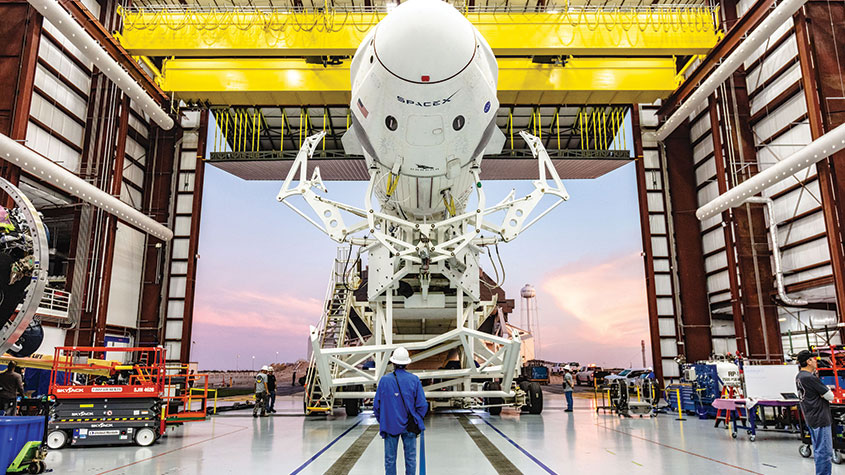 Invest in space: the final frontier for investors
Invest in space: the final frontier for investorsCover Story Matthew Partridge takes a look at how to invest in space, and explores the top stocks to buy to build exposure to this rapidly expanding sector.
-
 Invest in Brazil as the country gets set for growth
Invest in Brazil as the country gets set for growthCover Story It’s time to invest in Brazil as the economic powerhouse looks set to profit from the two key trends of the next 20 years: the global energy transition and population growth, says James McKeigue.
-
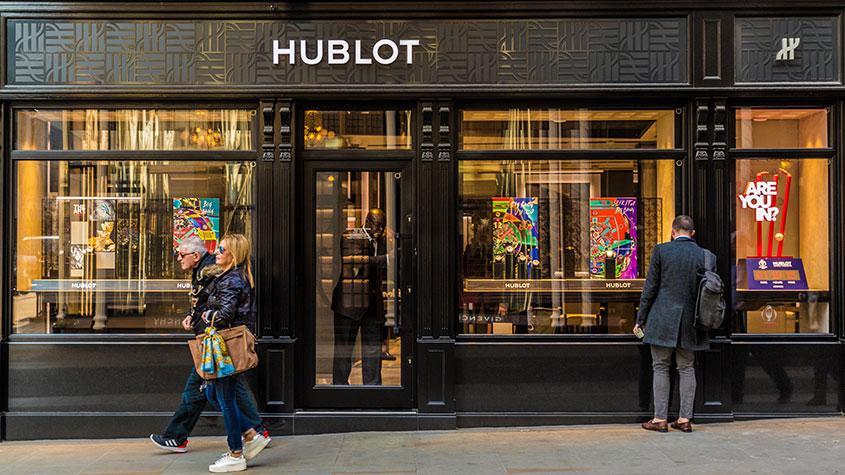 5 of the world’s best stocks
5 of the world’s best stocksCover Story Here are five of the world’s best stocks according to Rupert Hargreaves. He believes all of these businesses have unique advantages that will help them grow.
-
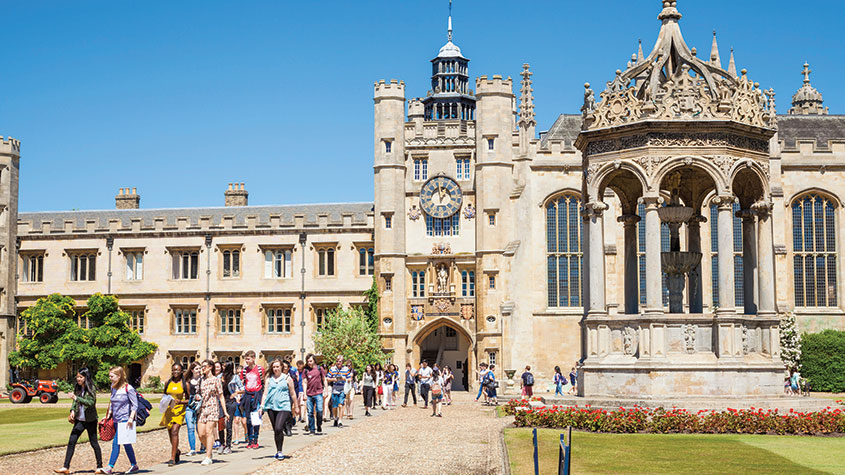 The best British tech stocks from a thriving sector
The best British tech stocks from a thriving sectorCover Story Move over, Silicon Valley. Over the past two decades the UK has become one of the main global hubs for tech start-ups. Matthew Partridge explains why, and highlights the most promising investments.
-
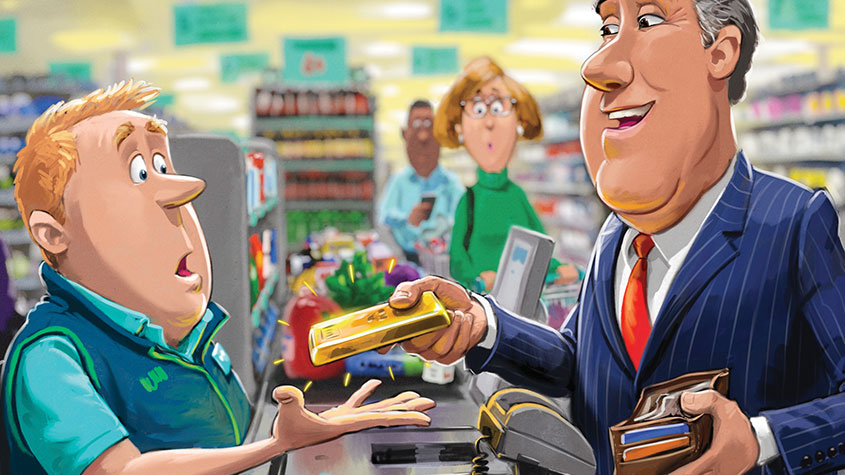 Could gold be the basis for a new global currency?
Could gold be the basis for a new global currency?Cover Story Gold has always been the most reliable form of money. Now collaboration between China and Russia could lead to a new gold-backed means of exchange – giving prices a big boost, says Dominic Frisby
-
 How to invest in videogames – a Great British success story
How to invest in videogames – a Great British success storyCover Story The pandemic gave the videogame sector a big boost, and that strong growth will endure. Bruce Packard provides an overview of the global outlook and assesses the four key UK-listed gaming firms.
-
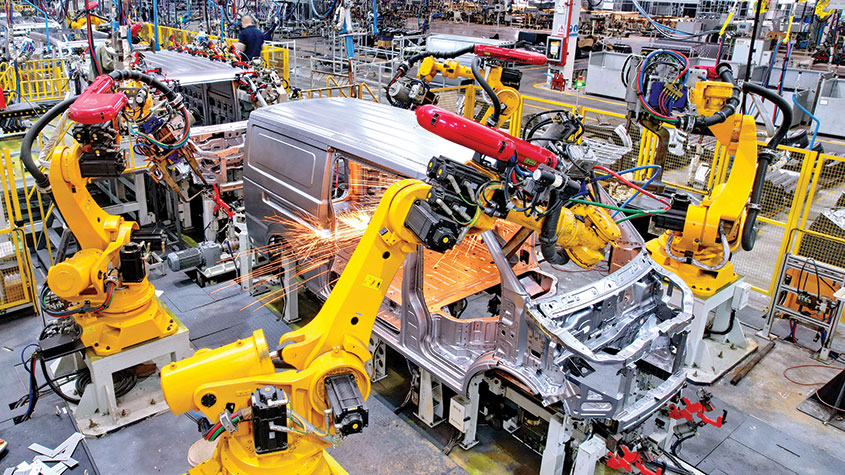 How to invest in smart factories as the “fourth industrial revolution” arrives
How to invest in smart factories as the “fourth industrial revolution” arrivesCover Story Exciting new technologies and trends are coming together to change the face of manufacturing. Matthew Partridge looks at the companies that will drive the fourth industrial revolution.
-
 Why now is a good time to buy diamond miners
Why now is a good time to buy diamond minersCover Story Demand for the gems is set to outstrip supply, making it a good time to buy miners, says David J. Stevenson.
